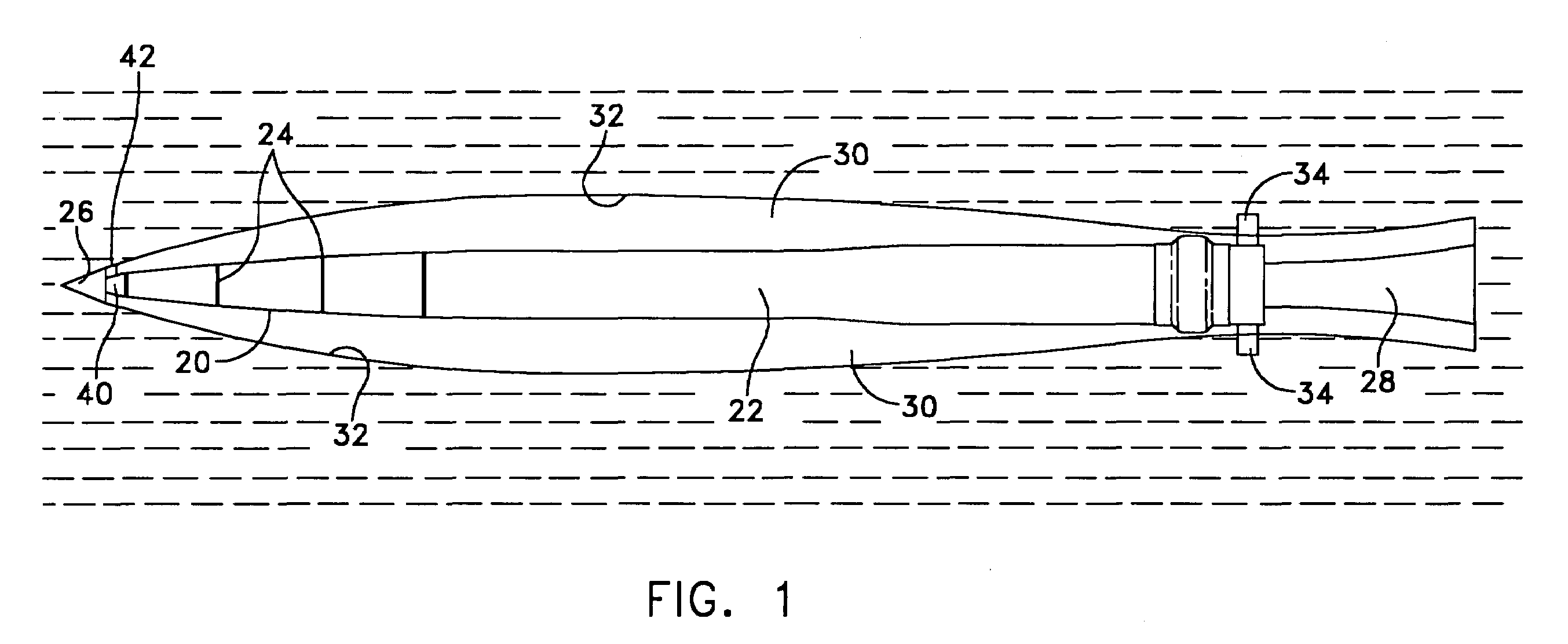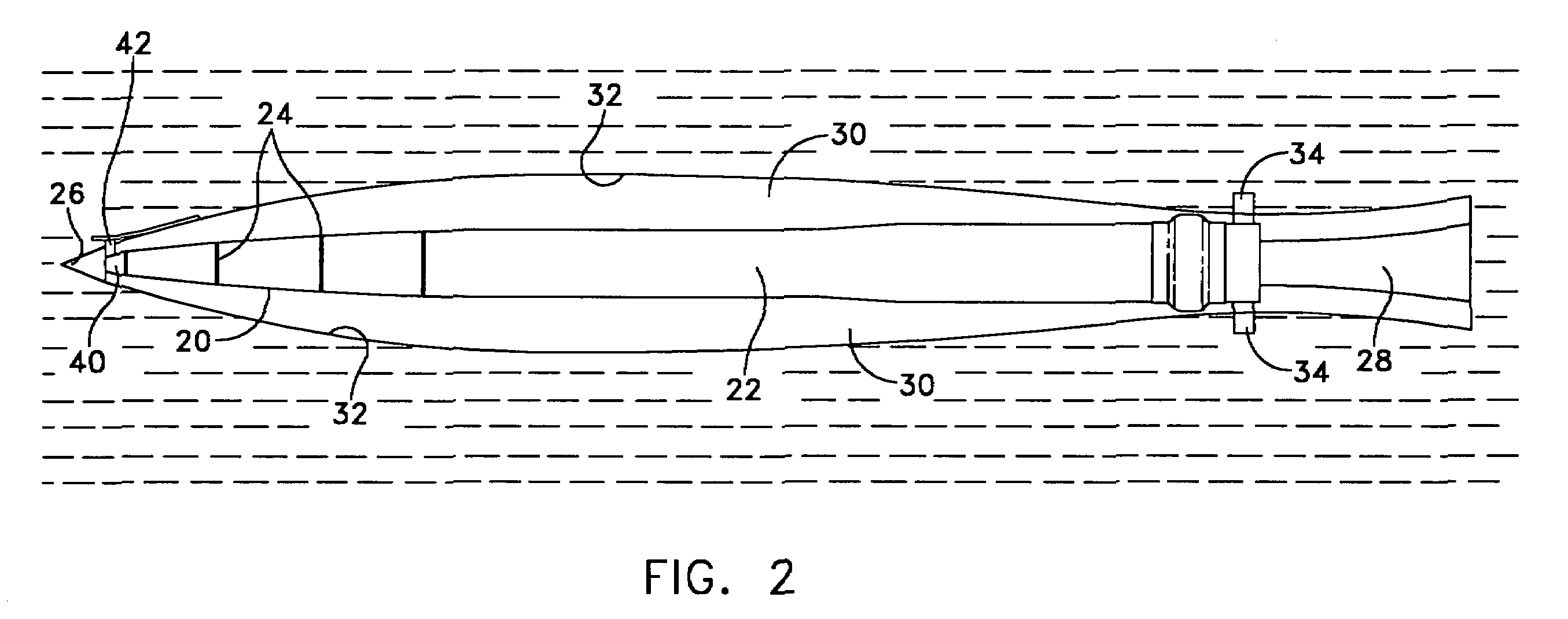Assembly and method for determining speed of a supercavitating underwater vehicle
a supercavitating underwater vehicle and speed measurement technology, applied in the direction of special-purpose vessels, vessel construction, instruments, etc., can solve the problems of inapplicability of vehicle control systems, inability to respect cavity formation means and vehicle control systems, and inability to use the cavitator surface as a velocity sensor
- Summary
- Abstract
- Description
- Claims
- Application Information
AI Technical Summary
Benefits of technology
Problems solved by technology
Method used
Image
Examples
Embodiment Construction
[0022]Referring to FIG. 1, it will be seen that an illustrative underwater vehicle 20 includes an elongated hull 22 of circular cross section. The hull is provided with peripheral grooves or apertures 24 for venting gas, typically air, stored in the vehicle under pressure. The hull 22 is provided with a cavitator, shown herein as a pointed nose cone 26, at the forward end of the hull. The hull 22 contains a reservoir of gas (not shown) under pressure for venting through the grooves 24, and a jet engine (not shown) for propelling the hull 22 forward at a rapid rate. The aft end 28 of the hull 22 is open to accommodate a jet plume when the jet engine is in operation.
[0023]Referring to FIG. 2, it will be seen that the forward movement of the vehicle 20 causes the nose cone 26, which acts as a cavitator, to create a cavity 30, or vapor region, behind the cone 26. The outflow of pressurized gas from the grooves 24 enlarges the cavity 30 and maintains the cavity such that the water-gas in...
PUM
 Login to View More
Login to View More Abstract
Description
Claims
Application Information
 Login to View More
Login to View More - R&D
- Intellectual Property
- Life Sciences
- Materials
- Tech Scout
- Unparalleled Data Quality
- Higher Quality Content
- 60% Fewer Hallucinations
Browse by: Latest US Patents, China's latest patents, Technical Efficacy Thesaurus, Application Domain, Technology Topic, Popular Technical Reports.
© 2025 PatSnap. All rights reserved.Legal|Privacy policy|Modern Slavery Act Transparency Statement|Sitemap|About US| Contact US: help@patsnap.com



